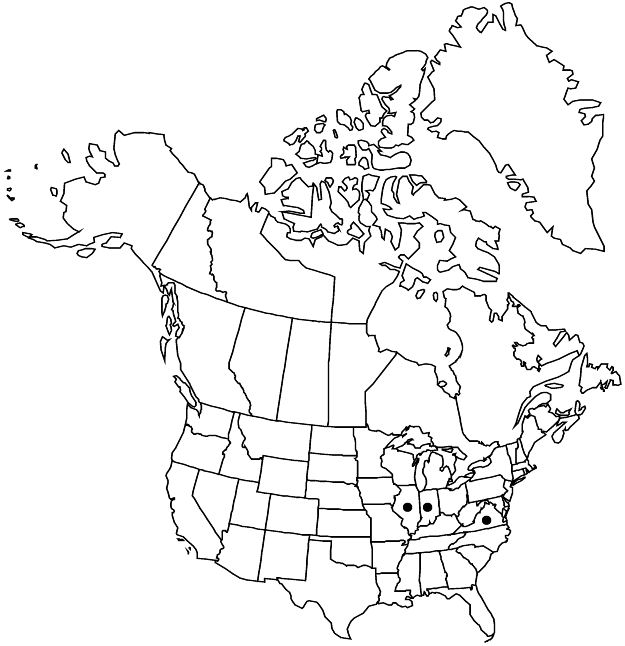Difference between revisions of "Iliamna remota"
Leafl. Bot. Obs. Crit. 1: 206. 1906.
FNA>Volume Importer |
FNA>Volume Importer |
Revision as of 22:45, 16 December 2019
Stems 1–2.5 m; herbage densely to sparsely stellate-hairy. Leaf blades (3-), 5-, or 7-lobed, 6–20 cm wide, lobes broadly triangular-ovate, base truncate to cordate, margins crenate-dentate, sinuses broad, obtuse. Inflorescences clusters forming interrupted racemes distally; involucellar bractlets linear, 6–9 × 1 mm, 1/2–2/3 as long as calyx. Flowers fragrant; calyx 12–18 mm, lobes broadly ovate-acuminate, 6–8 mm, ± as wide as long, ± equaling tube; petals pale rose-purple, 2.5–3 cm. Schizocarps 15 mm diam.; mericarps 15, 10 mm. Seeds 2 or 3(or 4), dark brown, 3 mm, densely hairy. 2n = 66.
Phenology: Flowering Jun–Aug.
Habitat: Open woods and rocky slopes, riverbanks, shores and gravel bars of rivers, abandoned cultivated fields in sandy clay loam
Elevation: 100–200 m
Distribution

Ill., Ind., Va.
Discussion
Iliamna remota is known from Langham Island opposite Altorf in the Kankakee River (about nine miles northwest of Kankakee, Illinois), where it persists as the only certain wild locality; it now may occasionally escape from cultivation or deliberate introduction, as apparently was the case of a naturalized population found in the 1940s in swale about two miles east of New Paris, Indiana. It was apparently distributed along railroads by enthusiastic wildflower groups in the last century. Iliamna remota is listed as endangered by the state of Illinois.
Selected References
None.